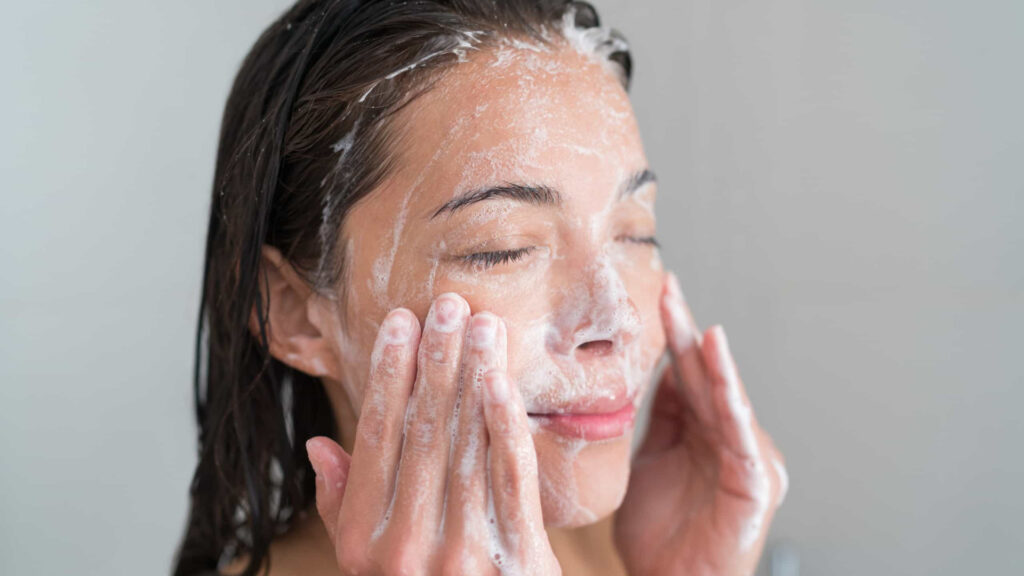Table of Contents
Understanding Oily Acne Prone Skin
If you have oily acne-prone skin, you may be all too familiar with the challenges of maintaining a clear complexion. Oily skin often leads to excess sebum production, which can clog pores and encourage breakouts. However, with the right skin care routine for oily acne prone skin, you can effectively manage oil levels and keep acne at bay.
Step-by-Step Skin Care Routine for Oily Acne Prone Skin
1. Cleansing
Start your day and end your night with a gentle cleanser designed for oily skin. Look for foaming cleansers or gel-based formulas that can help remove excess oil and impurities without stripping your skin of its natural moisture. Ingredients like salicylic acid can target and prevent breakouts.
2. Exfoliating
Exfoliation is crucial for any skin care routine, especially for oily and acne-prone skin. Aim to exfoliate 2 to 3 times a week. Choose a chemical exfoliant containing AHAs (Alpha Hydroxy Acids) or BHAs (Beta Hydroxy Acids), which help to unclog pores, reduce oiliness, and promote cell turnover. Avoid physical scrubs that can irritate and inflame the skin.
3. Toning
After cleansing, apply a toner to help balance your skin’s pH. A good toner for oily acne-prone skin should be alcohol-free and contain ingredients like witch hazel or tea tree oil to further combat bacteria and reduce inflammation. Toners can also remove any remaining residue from cleansing.
4. Treating
This step is vital in your skin care routine for oily acne prone skin. Use targeted treatments with active ingredients that address your specific skin concerns. Look for spot treatments with benzoyl peroxide or salicylic acid to reduce the appearance of breakouts. These ingredients work by penetrating the pore and eliminating bacteria causing acne.
5. Moisturizing
Contrary to popular belief, oily skin needs moisture too! Opt for lightweight, oil-free or gel-based moisturizers that provide hydration without clogging pores. Ingredients like hyaluronic acid can help keep your skin hydrated while also controlling sebum production.
6. Sun Protection
Never skip sunscreen, especially if you are using exfoliants or acne treatments that can make your skin more sensitive to sunlight. Choose a broad-spectrum sunscreen labeled “non-comedogenic” that won’t clog your pores. Apply it daily, even when it’s cloudy.
Best Ingredients for Oily Acne Prone Skin

Incorporating the right ingredients into your skin care routine can make all the difference. Here are some of the best options:
- Salicylic Acid: Helps to unclog pores and reduce oils.
- Benzoyl Peroxide: Treats active breakouts by killing acne-causing bacteria.
- Niacinamide: Reduces inflammation and regulates oil production.
- Tea Tree Oil: Has natural antibacterial properties that help control acne.
- Hyaluronic Acid: Keeps the skin hydrated and balances oiliness.
Essential Tips for Maintaining Healthy Skin
- Avoid Overwashing: Stick to cleansing twice daily to avoid irritation.
- Stay Hydrated: Drink plenty of water to help your skin stay hydrated.
- Diet Matters: Incorporate a balanced diet rich in fruits, vegetables, and whole grains to support skin health.
- Consistent Routine: Stick to a regular skin care routine for the best results.
- Don’t Pop Pimples: Picking at acne can cause further irritation and lead to scarring.
Conclusion
In summary, managing oily and acne-prone skin involves a consistent and mindful skin care routine for oily acne prone skin. From choosing the right products to following the cleansing and treatment steps, taking care of your skin might seem overwhelming at times. However, with patience and the right approach, you can significantly improve your skin’s clarity and overall appearance.
Your skin is unique, and finding what works for you may require a bit of experimentation, but the tips and routines outlined above are a great place to start. Remember, if you’re ever uncertain about products or treatments, consult a dermatologist for personalized advice.


